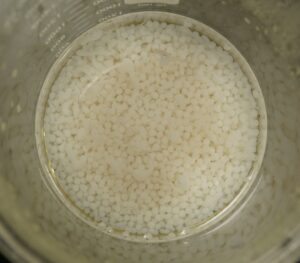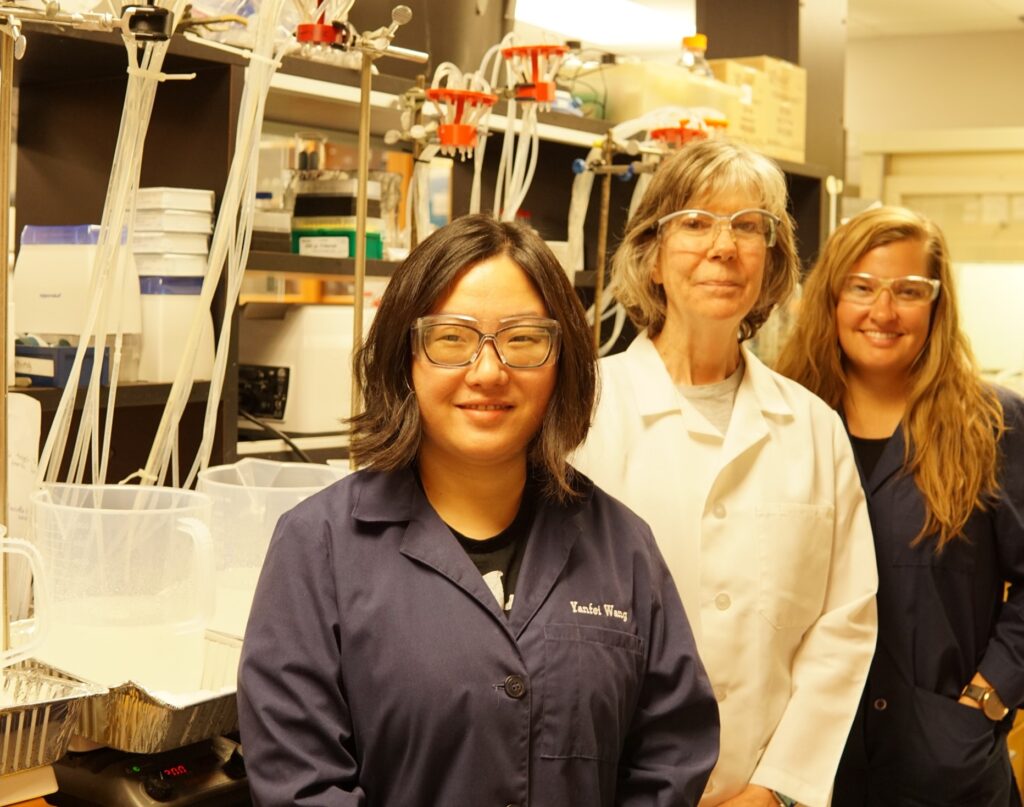
NCCOS scientists and partners are now exploring a controlled-release method for managing harmful algal blooms (HABs). Controlled-release technologies allow for a product to be delivered at a predictable and consistent rate to achieve an optimal dosage or application rate over time. While controlled-release technologies are commonly used for pharmaceuticals, applying this technique for environmental purposes is relatively new.
A new study, “Development of alginate beads for precise environmental release applications: A design of experiment based approach and analysis,” in the Journal of Environmental Management, focuses on understanding how various factors influence the stability and diffusion of product from alginate-based, controlled-release technologies for future environmental applications of HAB control products. Alginate is a non-toxic substance extracted from brown algae and is widely used to encapsulate pharmaceuticals due to its ability to form porous gels that allow for the consistent release of product over a prolonged period of time. Alginate was ideal for this study due to its environmental safety, widespread availability, and relatively low-cost, which allows for its sustained use in natural waters at various scales. Through this study, scientists explored various factors and characteristics of the alginate beads to improve and fine tune the best controlled-release rate of the product. Factors considered included: chitosan molecular weight and concentration (protective coating that can help prolong the sustained release of product), calcium concentration (gelling agent that influences bead porosity), drop height (directly affects bead shape and overall stability), and bead size (impacts maximum amount of product encapsulated per bead). The team used Brilliant Blue Dye as a measurable surrogate tracer for encapsulated active products to show how these modifications to the alginate beads would change the rate of release into seawater over time. This approach enabled scientists to understand differences in predicted controlled-release application rates to marine waters for the first time.

The study indicated that a combination of both large and small beads may be the most successful strategy to maximize effectiveness in controlling HABs in marine waters in the future. For example, small beads have a faster release rate that would provide an immediate treatment of HABs, while large beads with more product contained within would provide sustained, prolonged treatment to limit risks around potentially recurring HAB events.
In addition to the management of HABs, this approach could aid in addressing a variety of challenges throughout the environmental and healthcare realms.
Read the full journal article for more information. This research is part of a larger effort to control harmful algal blooms.
Partners in this effort: Bennett Aerospace, U.S. Army Engineer Research and Development Center, Virginia Polytechnic Institute and State University, Oak Ridge Institute for Science and Education, University of Delaware (UD) College of Earth, Ocean, and Environment
